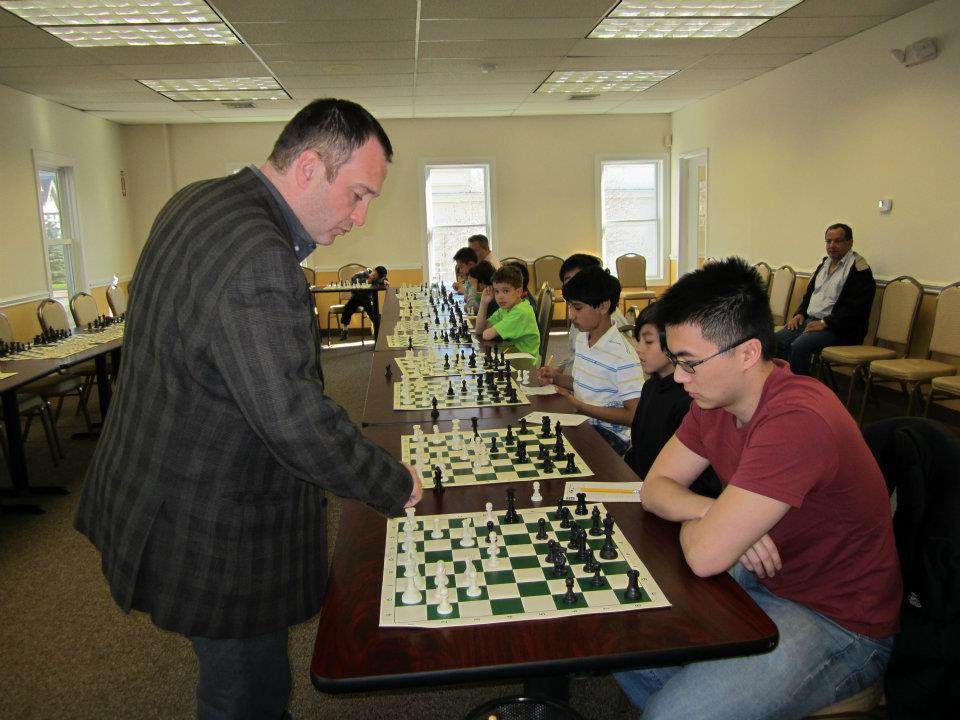





 If you believe the old truism that we learn as much from our failures as we do from our successes, then perhaps you can understand the appeal of a chess simultaneous exhibition, or ‘simul’ as the insiders like to say. It pits one high-ranking player against as many as step forward to compete. Typically, the high-ranking player is an acknowledge International Grand Master, but any player with star power can draw a crowd. All it really requires is a group of lower-rated contenders who want to test their skills against a stronger performer. And who don’t mind losing in the process.
If you believe the old truism that we learn as much from our failures as we do from our successes, then perhaps you can understand the appeal of a chess simultaneous exhibition, or ‘simul’ as the insiders like to say. It pits one high-ranking player against as many as step forward to compete. Typically, the high-ranking player is an acknowledge International Grand Master, but any player with star power can draw a crowd. All it really requires is a group of lower-rated contenders who want to test their skills against a stronger performer. And who don’t mind losing in the process.
According to Chess Club of Fairfield County (CCFC) Scholastic Director Dan Lowinger, the largest chess simultaneous exhibition featured one player against something like 3,000 competitors. On Friday evening, CCFC hosted a simul, though the competitors didn’t quite number in the thousands. International Grand Master Mikheil Kekelidze went up against 16 players, who ranged in age from 5 years old to adults, in a match that lasted about an hour and 45 minutes.
Besides the fact that my son was competing, watching chess matches is a strangely compelling sight (and much more relaxing that watching your child compete in, let's say,a football game). You sit quietly and watch people sitting quietly, alone together with their thoughts. Did I mention it’s quiet? The intense silence creates a heightened awareness of the hum of the florescent lights, a distant phone ringing, the occasional cough, which suddenly seem as distracting as a jackhammer. At one point, I could hear a priest conducting a Good Friday service in front of the church across the street (he was, apparently, miked).
The chess boards were set up in a U shape, and Kekelidze walked it counter-clockwise, stopping at each board to make his move. His longest stop was about 30 seconds. Lowinger told me that etiquette, more than hard-and-fast rules, govern simul protocol. Where most matches include clocks to time players’ moves, in a simul, they’re expected to move their pieces by the time the Grand Master arrives back at their board. Most of the CCFC players waited for Kekelidze to cycle back to them before actually committing to their move. In the interim, they scrutinized their boards, furrowed brows, hands cradling chins or massaging temples, shoulders hunched in concentration.
The simultaneous exhibition, Lowinger said, began in the mid-19th Century with Paul Morphy, the first American chess player to achieve international stardom. While traveling in England, Morphy offered to compete against as many competitors as were willing to face him, playing eight others simultaneous while blindfolded and winning every game. The tradition has evolved to incorporate not so much rules as acknowledged etiquette. Typically, the ratings of the masses are at least 600 points below that of the star player.
Knowing this, and that even against such odds, the grand masters rarely lose, I asked my son, who is not a fan of losing, what accounts for the appeal of playing these games. It’s exciting, he told me, to play against the very best, and since you expect to lose, you can just focus on studying the game and absorbing strategies to apply in other contexts. In other words, in ‘the humble space of losing,’ as Stephanie K. Hopkins so eloquently put it, you become a true student of the game, attuned to everything you can miss in the adrenaline rush of pursuing victory.
Now if we could all just remember that…